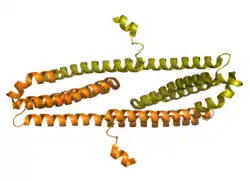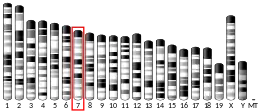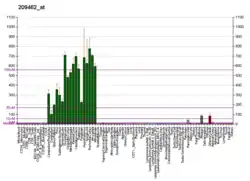| APLP1 | |||||||||||||||||||||||||||||||||||||||||||||||||||
|---|---|---|---|---|---|---|---|---|---|---|---|---|---|---|---|---|---|---|---|---|---|---|---|---|---|---|---|---|---|---|---|---|---|---|---|---|---|---|---|---|---|---|---|---|---|---|---|---|---|---|---|
 | |||||||||||||||||||||||||||||||||||||||||||||||||||
| |||||||||||||||||||||||||||||||||||||||||||||||||||
| Identifiers | |||||||||||||||||||||||||||||||||||||||||||||||||||
| Aliases | APLP1, APLP, amyloid beta precursor like protein 1 | ||||||||||||||||||||||||||||||||||||||||||||||||||
| External IDs | OMIM: 104775 MGI: 88046 HomoloGene: 68447 GeneCards: APLP1 | ||||||||||||||||||||||||||||||||||||||||||||||||||
| |||||||||||||||||||||||||||||||||||||||||||||||||||
| |||||||||||||||||||||||||||||||||||||||||||||||||||
| |||||||||||||||||||||||||||||||||||||||||||||||||||
| |||||||||||||||||||||||||||||||||||||||||||||||||||
| |||||||||||||||||||||||||||||||||||||||||||||||||||
| Wikidata | |||||||||||||||||||||||||||||||||||||||||||||||||||
| |||||||||||||||||||||||||||||||||||||||||||||||||||
Amyloid-like protein 1, also known as APLP1, is a protein that in humans is encoded by the APLP1 gene.[5][6] APLP1 along with APLP2 are important modulators of glucose and insulin homeostasis.[7]
Function
This gene encodes a member of the highly conserved amyloid precursor protein gene family. The encoded protein is a membrane-associated glycoprotein that is cleaved by secretases in a manner similar to amyloid beta A4 precursor protein cleavage. This cleavage liberates an intracellular cytoplasmic fragment that may act as a transcriptional activator. The encoded protein may also play a role in synaptic maturation during cortical development. Alternatively spliced transcript variants encoding different isoforms have been described.[5]
APLP1 and APLP2 double knockout mice display hypoglycemia and hyperinsulinemia indicating that these two proteins are important modulators of glucose and insulin homeostasis.[7]
References
- 1 2 3 GRCh38: Ensembl release 89: ENSG00000105290 - Ensembl, May 2017
- 1 2 3 GRCm38: Ensembl release 89: ENSMUSG00000006651 - Ensembl, May 2017
- ↑ "Human PubMed Reference:". National Center for Biotechnology Information, U.S. National Library of Medicine.
- ↑ "Mouse PubMed Reference:". National Center for Biotechnology Information, U.S. National Library of Medicine.
- 1 2 "Entrez Gene: APLP1 amyloid beta (A4) precursor-like protein 1".
- ↑ Wasco W, Brook JD, Tanzi RE (January 1993). "The amyloid precursor-like protein (APLP) gene maps to the long arm of human chromosome 19". Genomics. 15 (1): 237–9. doi:10.1006/geno.1993.1047. PMID 8432545.
- 1 2 Needham BE, Wlodek ME, Ciccotosto GD, Fam BC, Masters CL, Proietto J, Andrikopoulos S, Cappai R (June 2008). "Identification of the Alzheimer's disease amyloid precursor protein (APP) and its homologue APLP2 as essential modulators of glucose and insulin homeostasis and growth". J. Pathol. 215 (2): 155–63. doi:10.1002/path.2343. PMID 18393365. S2CID 1064378.
External links
- Human APLP1 genome location and APLP1 gene details page in the UCSC Genome Browser.
Further reading
- Bayer TA, Cappai R, Masters CL, et al. (2000). "It all sticks together--the APP-related family of proteins and Alzheimer's disease". Mol. Psychiatry. 4 (6): 524–8. doi:10.1038/sj.mp.4000552. PMID 10578233.
- Kim TW, Wu K, Xu JL, et al. (1996). "Selective localization of amyloid precursor-like protein 1 in the cerebral cortex postsynaptic density". Brain Res. Mol. Brain Res. 32 (1): 36–44. doi:10.1016/0169-328X(95)00328-P. PMID 7494461.
- Bush AI, Pettingell WH, de Paradis M, et al. (1994). "The amyloid beta-protein precursor and its mammalian homologues. Evidence for a zinc-modulated heparin-binding superfamily". J. Biol. Chem. 269 (43): 26618–21. doi:10.1016/S0021-9258(18)47062-7. PMID 7929392.
- Wasco W, Brook JD, Tanzi RE (1993). "The amyloid precursor-like protein (APLP) gene maps to the long arm of human chromosome 19". Genomics. 15 (1): 237–9. doi:10.1006/geno.1993.1047. PMID 8432545.
- Bressler SL, Gray MD, Sopher BL, et al. (1997). "cDNA cloning and chromosome mapping of the human Fe65 gene: interaction of the conserved cytoplasmic domains of the human beta-amyloid precursor protein and its homologues with the mouse Fe65 protein". Hum. Mol. Genet. 5 (10): 1589–98. doi:10.1093/hmg/5.10.1589. PMID 8894693.
- Paliga K, Peraus G, Kreger S, et al. (1998). "Human amyloid precursor-like protein 1--cDNA cloning, ectopic expression in COS-7 cells and identification of soluble forms in the cerebrospinal fluid". Eur. J. Biochem. 250 (2): 354–63. doi:10.1111/j.1432-1033.1997.0354a.x. PMID 9428684.
- Lenkkeri U, Kestilä M, Lamerdin J, et al. (1998). "Structure of the human amyloid-precursor-like protein gene APLP1 at 19q13.1". Hum. Genet. 102 (2): 192–6. doi:10.1007/s004390050676. PMID 9521588. S2CID 709094.
- McNamara MJ, Ruff CT, Wasco W, et al. (1998). "Immunohistochemical and in situ analysis of amyloid precursor-like protein-1 and amyloid precursor-like protein-2 expression in Alzheimer disease and aged control brains". Brain Res. 804 (1): 45–51. doi:10.1016/S0006-8993(98)00653-2. PMID 9729270. S2CID 25127562.
- Tomita S, Ozaki T, Taru H, et al. (1999). "Interaction of a neuron-specific protein containing PDZ domains with Alzheimer's amyloid precursor protein". J. Biol. Chem. 274 (4): 2243–54. doi:10.1074/jbc.274.4.2243. PMID 9890987.
- Homayouni R, Rice DS, Sheldon M, Curran T (1999). "Disabled-1 binds to the cytoplasmic domain of amyloid precursor-like protein 1". J. Neurosci. 19 (17): 7507–15. doi:10.1523/JNEUROSCI.19-17-07507.1999. PMC 6782519. PMID 10460257.
- Simons A, Ruppert T, Schmidt C, et al. (2002). "Evidence for a copper-binding superfamily of the amyloid precursor protein". Biochemistry. 41 (30): 9310–20. doi:10.1021/bi0258647. PMID 12135352.
- Scheinfeld MH, Ghersi E, Laky K, et al. (2003). "Processing of beta-amyloid precursor-like protein-1 and -2 by gamma-secretase regulates transcription". J. Biol. Chem. 277 (46): 44195–201. doi:10.1074/jbc.M208110200. PMID 12228233.
- Strausberg RL, Feingold EA, Grouse LH, et al. (2003). "Generation and initial analysis of more than 15,000 full-length human and mouse cDNA sequences". Proc. Natl. Acad. Sci. U.S.A. 99 (26): 16899–903. Bibcode:2002PNAS...9916899M. doi:10.1073/pnas.242603899. PMC 139241. PMID 12477932.
- Walsh DM, Fadeeva JV, LaVoie MJ, et al. (2003). "gamma-Secretase cleavage and binding to FE65 regulate the nuclear translocation of the intracellular C-terminal domain (ICD) of the APP family of proteins". Biochemistry. 42 (22): 6664–73. doi:10.1021/bi027375c. PMID 12779321.
- Yamakami M, Yoshimori T, Yokosawa H (2004). "Tom1, a VHS domain-containing protein, interacts with tollip, ubiquitin, and clathrin". J. Biol. Chem. 278 (52): 52865–72. doi:10.1074/jbc.M306740200. PMID 14563850.
- Adlerz L, Beckman M, Holback S, et al. (2004). "Accumulation of the amyloid precursor-like protein APLP2 and reduction of APLP1 in retinoic acid-differentiated human neuroblastoma cells upon curcumin-induced neurite retraction". Brain Res. Mol. Brain Res. 119 (1): 62–72. doi:10.1016/j.molbrainres.2003.08.014. PMID 14597230.
- Li Q, Südhof TC (2004). "Cleavage of amyloid-beta precursor protein and amyloid-beta precursor-like protein by BACE 1". J. Biol. Chem. 279 (11): 10542–50. doi:10.1074/jbc.M310001200. PMID 14699153.
- Ota T, Suzuki Y, Nishikawa T, et al. (2004). "Complete sequencing and characterization of 21,243 full-length human cDNAs". Nat. Genet. 36 (1): 40–5. doi:10.1038/ng1285. PMID 14702039.
- Eggert S, Paliga K, Soba P, et al. (2004). "The proteolytic processing of the amyloid precursor protein gene family members APLP-1 and APLP-2 involves alpha-, beta-, gamma-, and epsilon-like cleavages: modulation of APLP-1 processing by n-glycosylation". J. Biol. Chem. 279 (18): 18146–56. doi:10.1074/jbc.M311601200. PMID 14970212.




